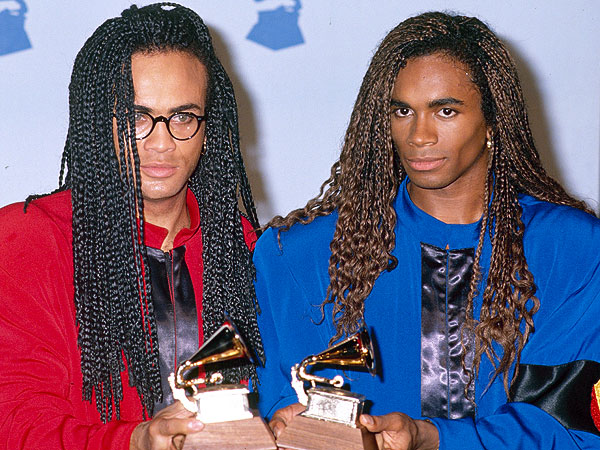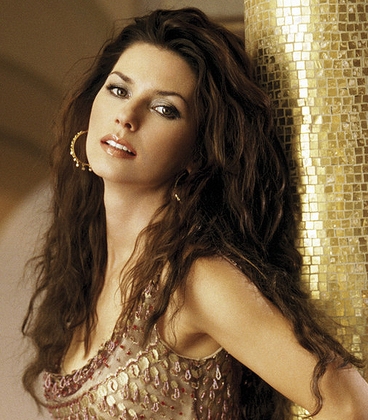Lip syncing thrives in concert karaoke
Posted on February 24, 2015 By Mike Ross culture, Entertainment, entertainment, Front Slider, Music
 The Quixotic quest to get warning labels on concert tickets appears to be a non-starter. Imagine: “PARENTAL ADVISORY: Portions of tonight’s ‘live’ concert will contain pre-recorded backing tracks” … only in your dreams.
The Quixotic quest to get warning labels on concert tickets appears to be a non-starter. Imagine: “PARENTAL ADVISORY: Portions of tonight’s ‘live’ concert will contain pre-recorded backing tracks” … only in your dreams.
“There are no plans to require concert promoters to print warnings on tickets regarding pre-recorded material,” says the Alberta government.
“I’ve never heard of anything so stupid in my life,” says veteran Edmonton concert promoter Dave Johnston.
He points out that his company, Union Events, and other promoters will often post signs at venues warning of perils like strobe lights or loud explosions. It’s in the interest of public safety, though they are not required by law to do so. Another matter entirely is paying for a concert ticket only to discover that half the show has been “tracked.” Because it happens all the time. Buyer beware.
Scott Seymour, spokesman for Service Alberta’s Consumers Division, passes on the official word: “As with any purchase, the more informed or proactive a consumer is before they buy concert tickets, the better. If consumers are concerned about the use of pre-recorded material for an event, they should consider checking reviews of previous concerts or looking on the performer’s official website to see if there are any disclaimers or notes about use of pre-recorded material.”
Fat chance

Band or Broadway show?
Discounting electronic bands known for using tracks – such as Linkin Park, which has had a DJ in the band from day one – or your standard pop diva Cirque du Karaoke show, there are a lot of bands using tracks many fans would never suspect: KISS, Coldplay, Motley Crue, every bro-country act that’s come to Edmonton. Keyboards, strings, horns, percussion, rhythm guitars, back-up vocals, sometimes even lead vocals, you name it, tracks are rampant in an industry obsessed with perfection. Yet no one will admit it. No one will talk about it. It’s yet another shameful secret of the music business.
Flipping it around, however, are those who stubbornly refuse to use pre-recorded tracks at all. They’re proud of that. The Tea Party, which has produced music on record you couldn’t possibly play with a three-piece band, claims not to use any tracks live. Drummer Jeff Burrows says, “The Tea Party doesn’t even use a click,” referring to the metronomic click track crucial to using pre-recorded material in concert with live musicians. In some cases, it’s the drummer’s job to push “play” on his laptop loaded with the latest in multi-track digital recording software. At higher levels there’s a dedicated tracking roadie who’s in constant communication with the drummer – because they can’t fuck it up. No one wants to get caught using tracks, while the professional musicians actually playing their own instruments must play every song perfectly and exactly the same way every single time. Doesn’t that sound like fun?
“I’ve never used tracks,” declares Calgary alternative blues artist Matt Blais. “I’ve seen artists rely on them too heavily and things go wrong. Why does everything have to be perfect? I like my heroes flawed. I value passion over perfection.” He adds that he can understand a performer using programmed sounds to augment the performance, “but when you start robbing the audience of the human experience of music, I wonder why you’re performing in the first place.”
This argument goes back a long way. Classic rock fans may remember Queen’s early records had disclaimers printed on the sleeves: “NO SYNTHS!” Never mind the layers of overdubs impossible to reproduce live. When art rock was getting started, real musicians objected to the Mellotron, an early electro-mechanical synth that used recordings of strings on short tape loops triggered by a keyboard. Horn players also worried about their livelihoods being threatened by samplers, though to this day you can’t beat a live horn section. Keyboards and drums, not so much. You can take this as far as you want. You’re cheating because you didn’t raise the goat yourself to make your goat skin djembe, but now have no time to make music because you’re too busy tending goats – as one meme floating around reads.
Vancouver’s activist folksmith Geoff Berner, who doesn’t use tracks, is one of several musicians polled who doesn’t quibble with a performer’s methods. He says the anti-tracks sentiment “seems positive on the surface, but underneath is some unexamined prejudice. Kind of like the Disco Sucks movement of the early ‘80s.”
 And look where that got us. Lip syncing has shameful roots in the 1980s. In 1989, an R&B pop duo called Milli Vanilli scored a worldwide hit with Girl You Know It’s True. The duo won a Grammy the following year, but was stripped of the award after it was revealed they didn’t actually sing on the record. Even before the scandal ruined their careers, Fab Morvan and Rob Pilatus were caught lip-syncing during live shows. Afterwards, troubled by alcoholism, drug abuse and depression, Pilatus died of an overdose in 1998 on the eve of the duo’s “comeback,” their names tainted forever, a punchline for the shame of getting caught being fake.
And look where that got us. Lip syncing has shameful roots in the 1980s. In 1989, an R&B pop duo called Milli Vanilli scored a worldwide hit with Girl You Know It’s True. The duo won a Grammy the following year, but was stripped of the award after it was revealed they didn’t actually sing on the record. Even before the scandal ruined their careers, Fab Morvan and Rob Pilatus were caught lip-syncing during live shows. Afterwards, troubled by alcoholism, drug abuse and depression, Pilatus died of an overdose in 1998 on the eve of the duo’s “comeback,” their names tainted forever, a punchline for the shame of getting caught being fake.
Another Milli Vanilli won’t happen these days – because it’s not necessary. Almost anyone who can’t sing can be made to sound great thanks to such recording studio technology as Pro-Tools and Auto-Tune.
You think Milli Vanilli would’ve been a wake-up call, but it wasn’t. Just a few years later came Shania Twain to turn the country industry on its ear with a slick, heavily-produced sound courtesy of producer-husband Mutt Lange. In the tours that followed – according to an inside source who wishes to remain anonymous, call him “Deep Mix” – every instrument in Shania’s show was tracked, including the lead vocals most of the time. She never got caught.
Ashlee Simpson wasn’t so lucky during her appearance on Saturday Night Live in 2004. Jessica’s little sister was caught lip-syncing, was roundly condemned and admitted afterwards it was a bad decision. The consequences were less grave than Milli Vanilli and she was even invited back on the show. Everyone had a good laugh.
Fast forward to the Red Hot Chili Peppers’ memorable performance at the 2014 Super Bowl – memorable because everything but the vocals were tracked, at the NFL’s insistence. No one would’ve noticed if it wasn’t for Flea, “performing” with obviously no cable plugged into his bass. He explained in a statement later, “The Red Hot Chili Peppers’ stance on any sort of miming has been that we will absolutely not do it” – but they played air guitar anyway and made a mockery of mime. Beyond a flurry of shaming, the band’s cred remains intact. Flea ended his statement with an assurance there will be no lip-syncing at real RHCP concerts: “We, as a band, aspire to grow as musicians and songwriters, and to continue to play our guts out live onstage for anyone who wants to get their brains blown out.”

A mime is a terrible thing to waste
Meanwhile, lip syncing has become commonplace among pop divas and boy bands, with their elaborate Broadway-meets-Vegas song-and-dance numbers, the accepted excuse that you can’t sing well and dance at the same time. Try it if you don’t believe them.
Stars like Katy Perry don’t lip-sync at all times during a show. They’ve become so clever, so well trained, and the technology so foolproof that nothing hardly ever goes wrong. “There are redundant systems these days,” says Deep Mix. “Nobody wants to get their Milli Vanilli Ashlee Simpson moment.” Singers use a device called a “ducker,” Deep Mix explains, a reverse gate that cuts off the pre-recorded vocal track the instant the singer talks – “hey, Edmonton, put your hands in the air!” – or maybe decides to sing for real. It’s difficult to hear the difference, especially with the multiple layers of other programmed tracks in these typically over-produced events.
The benefit for the struggling recording artist forced to tour more to maintain the lifestyle to which they’ve become accustomed is simple: tracking saves money. Union scale for all those fancy violin players and back-up singers really adds up; in the case of unknown pop acts with zero budget or even buy on, it’s entirely understandable that they would sing karaoke to their own tracks. Cheesy, but understandable.
Getting around this dilemma are artists who literally play with themselves – with the aid of electronic “loopers” on stage. A solo Ed Sheeran blew people away when he did it opening for Taylor Swift a couple of years back. You play or sing a four- or eight-bar pattern into a digital sampler and hit the button on the mark to get it to repeat. It takes real skill to make it work. You can make as many live loops as you want on the fly. The thing is still such a novelty that entertainers usually make pretty big deal about explaining it during shows – as Melissa Etheridge did with her new toy during her recent solo tour – and not insignificantly: to make clear that they while they are using “tracks,” they are not pre-recorded. That wouldn’t be cool now, would it?
It would take a Tipper Gore to champion the cause of lip sync warning labels. It would take a government order, and they’re not interested. It would take a very clever lawyer to draw the line – of the many lines that need to be drawn. And finally, it would take the full and complete cooperation of famous touring artists who do their utmost to keep the use of pre-recorded backing tracks a closely guarded secret.
Well … it was a good try.











